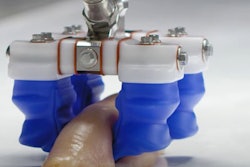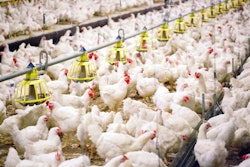
The data generated by poultry processing plant inspection systems can be put to far greater use than is currently the case. By employing real-time analysis of data that is all too often simply ignored, poultry processing plants can raise quality and efficiency.
End-of-line inspection is a standard part of the quality control process in any poultry processing facility. Checkweighers, metal detectors, X-ray inspection systems and vision systems all monitor production to ensure quality and conformity of products.
But what is often missed is the hidden value of the data produced by such inspection systems.
Unlocking data complexity
Although inspection systems typically make binary decisions – an item is either good or bad – the data used to make those decisions is far more complex.
This data is usually discarded immediately after the quality control decision has been made – yet it could hold the key to valuable production line optimization.
A dramatic reduction in the costs associated with data collection, storage and analysis – along with new tools such as machine learning – have made it possible to capture "fast-moving" data on the production line and analyze it to yield benefits.
Measurements from a checkweigher, for example, can flag issues before they bring production to a halt. If four filling machines are involved in producing boxes of chicken nuggets and one of them develops a fault that leads to overweight boxes, high-level data might not suggest a problem if the batch averages across the four machines are within the accepted range. It is only when the individual weights are analyzed that a pattern emerges – allowing the issue to be identified and resolved.
Bringing data together
Linking equipment data can also reveal useful information.
If a weigh price labeler is linked to a vision system designed to ensure labels are properly applied, analysis of the contrast of the print on the label can provide an early warning that the print head is failing. Preventative maintenance can be carried out to avoid an unplanned stoppage if the print quality falls below the required standard – crucial if the label includes key allergen information.

X-ray inspection systems, at their most basic level, detect foreign objects such as metal, stone or glass contaminants. However, the X-ray image can also be used to verify a product’s integrity.
As with the checkweigher, reject periodicity can indicate an issue with upstream equipment, but X-ray inspection can probe deeper into the specific issue.
Take, for example, a four-pack of chicken spread pots. If one of the filler valves has become partially blocked, one of the four pots will be repeatedly underfilled. This underfill may not be sufficient for a checkweigher to identify the overall product as being underweight. But, by measuring the mass of each pot individually, using X-ray zoned mass inspection, the four individual masses can be reported to the supervisory system, and any deviations from the production norms can be identified rapidly.
The latest X-ray inspection technology can also be used to check that the correct number of items are in a container. This, combined with a checkweigher, ensures the correct package weight is maintained, and the product is supplied as expected. The technology can also highlight the average size distribution of a product.

With a pack of four chicken legs, for example, the total weight and the total number of legs is controlled, and any packs found to be non-conformant are rejected. But a pack containing three small and one large chicken legs, while acceptable, is not as desirable as four similarly sized legs.
However, the size of each chicken leg can be recorded by the X-ray system, and the data analyzed, even if it is not used to make a rejection decision. It may be decided, at a later date, that, in fact, this should be made a criterion for rejection – at which point historic data is available to allow a data-driven decision to be made regarding acceptable tolerances.
Ensuring traceability
Traceability is another key issue where reliable data is vital. If, for example, there is an increase in the rate of bone contamination in packs of chicken breast fillets, it can be difficult to determine which supplier provided the non-conformant material – until now, this has been a largely manual, time-consuming process.
If, however, the details of each unique inspection are automatically fed back to a central database which already has information on which starting batch was used and which intermediate equipment the product had passed through, it is much easier to determine how and why issues have arisen.
As the quantity of data increases, so does the value of combining data from a variety of sources.
Does the operation of one piece of equipment affect the behavior of a neighboring machine, for example, leading to a nonconformant product?
By bringing a broad range of data into a single location, in real time, temporal and environmental factors can be more easily correlated with issues. This interconnected data can be harnessed to reveal unprecedented hidden value in the poultry production line.















